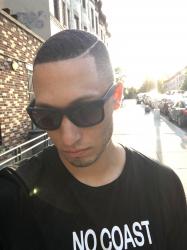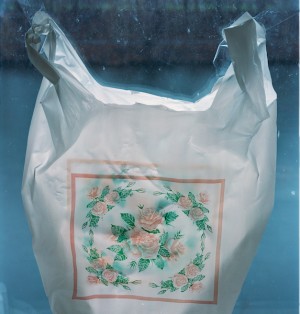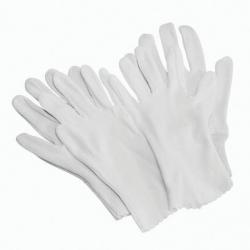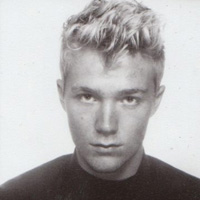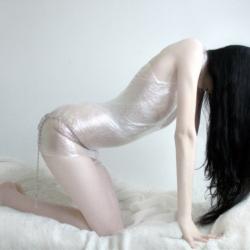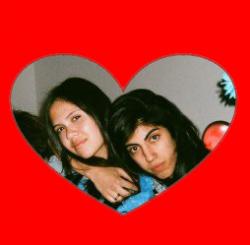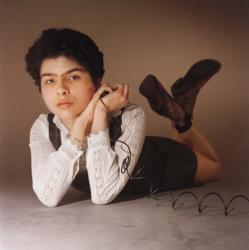Lafayette Anticipation associate curator Anna Colin talks to artist Tyler Coburn about Ergonomic Futures, a speculative project engaged with art, design, science, anthropology and writing. In this interview, Coburn discusses the research, production process and network of collaborators of a multilayered project ultimately concerned with the futures of humankind. Anna Colin: When one comes across your museum seats Ergonomic Futures (2016—) in contemporary art exhibitions—and soon in natural history, fine art, and anthropology museums—they look… [read more »]
Young, Colored & Angry: Issue #1
“Hey, some of us are actually young, colored, and angry, but some of us aren’t, and we all have something to say” explains Elliot Brown Jr. over coffee at a midtown Starbucks near his part-time job assisting artist Hank Willis Thomas. When Elliott decided to start a magazine along with fellow NYU Tisch student Ashley Rahimi Syed, the two friends reasoned that whatever tone they expressed themselves in, they would inevitably be dubbed ‘young, colored and angry.’ So they called their magazine just that. The first issue of Young, Colored & Angry was published this past May, and featured exclusively work by young People of Color. It’s been circulating and sparking debate and discussion around questions of racial identity, sexuality, and politics since then. Read these excerpts from an exclusive DIScussion with Ashley and Elliott about their work and YCA.

Daryl Oh, Projections, 2015. Courtesy of Young, Colored and Angry
Ada O’Higgins: How did you guys come up with the idea for YCA?
Elliott Brown Jr.: It is an online magazine exclusively featuring the artwork and writing of People of Color. The impetus was that as two NYU students going to Tisch School of the Arts, a lot of our work was racially motivated. It wasn’t being received in the way we wanted it to and it wasn’t being critiqued in the way that we thought it needed to be in order for it to grow. It’s also a reaction to sitting in class in a predominantly white institution where the majority of our peers are white. When we would present our work the critique was almost non-existent. Our peers felt uncomfortable responding to the work, or did not feel that they could relate to the content. Everyone else’s critiques were in-depth and spoke directly to that artist’s content, but our critiques were uncomfortably silent. A lot of our white peers’ works deal with concepts that are accessible to all of us. For the most part, all of us have been taught the foundations of whiteness in some way. But with these more conceptual based projects that specifically deal with race and non-white identity, we are finding that the projects weren’t being discussed in the ways that we felt they needed to be in order to grow. So we wanted to create a space where we could welcome a group of artists and academics that had similar foundations and approached things in a similar way to us as People of Color.
Ashley Rahimi Syed: We wanted to create a space that provided young creators of Color with all that our universities couldn’t. I think that it’s still difficult to be non-white in an academic institution. I took a course on the history of international politics in the Middle East last year, which was the first politics/history course I had taken in my undergraduate career. I was surprised by how few Middle-Eastern students, and especially Middle-Eastern women, had enrolled. And while I had chosen the course because I wanted to learn more about my heritage, there were many students who were planning on pursuing careers with the US State Department to protect our foreign policy interests in the region. These were the students who tried to justify the CIA-sponsored coup in Iran in 1953, or the continued occupation and privatization of national industries in Iraq after Saddam was overthrown. It frustrated me these politics or history majors knew more about my background than I did, and were going to use this information to uphold Western influence in the region in a way that may not be beneficial to those living there. When I began feeling that frustration, I didn’t know how I should express it or who I should talk to. This played a major role in my desire to create YCA. Not only did I want a place to grow artistically, and seek out the critique that was unavailable to me at Tisch, but I wanted to build a community of peers who could directly relate to experiences like this.

Victoria Elle, Neo Print Club, 2015. Courtesy of Young, Colored and Angry
Ada: How do you navigate your sense of cynicism and frustration (the angry part of Young, Colored & Angry) with hopefulness?
Elliott Brown, Jr.: We felt like even if we were to call this project something agreeable and inviting like “Hello Friend” people would still say “oh they’re all just young, colored, and angry” and dismiss what we had to say. So we decided to co-opt that label and use it as the name for our project. In response to cynicism, you can ask that question to any artist who makes work in this vein. Why continue to make this work when things in Baltimore are happening the way they are? So that really is kind of a question on every artist’s mind who works within this vein. Why continue?
Ashley Rahimi: The title is tongue-and-cheek. We try to emphasize this in the way in which our title is presented: our cover image is the words “Young, Colored & Angry” on a “Carrie” necklace that Elliott is wearing, and he is grinning at the camera. We wanted our reader or viewer to know that we are aware of the implications a project like ours may carry. By excluding white authors, we may come across as radical, supremacist or offensive–in general, we may seem young, colored and angry. But by co-opting this label, and presenting it in a humorous and visually appealing way, we want you to know that we’re doing something different. We get the ways we may be misconstrued, and we want you to know that those assumptions aren’t true. We’re onto something much bigger here.

Mariel Victoria Mok, Dronescapes, 2015. Courtesy of Young, Colored and Angry
Ada: There is possibly an issue with creating a safe space for the artists you’ve chosen who talk about race and identity, but then making it an exclusive space. As you were saying, some people don’t know how to react to the work because they don’t have the same experience, so what happens to those people if they are just excluded– how can white people participate in the conversation?
Ashley: White viewers who want to engage with our work do so everyday in our academic institutions. And they are absolutely welcome to attend our shows and read our magazines. Those who are motivated to do so are able to approach our featured artists and academics and offer their feedback–we list contact information for all of these authors on our website. But our priority in creating YCA was not thinking of additional ways in which to integrate a white audience into the conversation. The vast majority of gallery-represented artists in NYC are white. The vast majority of gallery owners in NYC are white. The vast majority of writers for publications based in NYC are white. The vast majority of owners of these media publications are white. The vast majority of PhD candidates in the United States are white. The vast majority of professors at elite academic institutions in the United States are white. Perhaps a better question to ask is, how can People of Color participate in these conversations?
Elliott: The main point of this space, YCA, is to create a space that exists rarely, if at all. So, we are creating this space out of a necessity to discuss our work and to have a platform where our voices are genuinely honored and respected. And although we share similar experiences, there are many points of difference within our experiences. For example, Ashley’s experience as a Middle-Eastern woman is one that I will never understand. And me being black and queer is an experience that Ashley won’t be able to speak for. In showcasing multiple perspectives, we are demonstrating how our voices can be strong when considered together. However, we also aim to highlight the differences in our experiences, and in this way operating within a politics of difference where we can respect each other’s nuances and allow that to inform the conversations between us.
Ada: I enjoyed the sarcasm in Sachin M.’s piece, “How to Talk to White Girls with a Vague and Condescending Appreciation for your Culture At Parties: A Primer”. Do you think humor and sarcasm are valuable tools for changing perceptions?
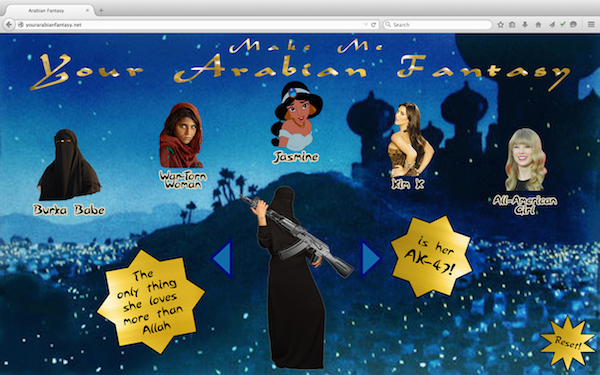
Ashley Rahimi Syed, www.yourarabianfantasy.net, 2014. Courtesy of Young, Colored and Angry
Elliott: Absolutely. That was an important part in developing the magazine. I mentioned to you earlier why we were so interested in the DIS Magazine model because of their ability to really innovate an aesthetic. To brand something that is really marked, recognizable, and approachable. In terms of Young, Colored & Angry, aestheticizing content makes it so that a variety of audiences are able to engage the work. The work that comprises the magazine represents a dynamic range of expressions. That was curated purposefully so that there would be multiple points of entry into the work. Humor is definitely a tactic, something that Ashley actually uses a lot. At our exhibition, she showed a piece called “Make Me Your Arabian Fantasy.” That is one of her seminal pieces where she creates a virtual paper-doll game that users can dress her in Western conceptions of Middle Eastern women. Placing this very serious subject and representing it through comedy and sarcasm makes it kind of haunting.
Ashley: A lot of us who have contributed to this issue/show feel frustrated by the way our race has limited us. But myself and a few other contributors, Sachin especially, have chosen to express this frustration not through angry outbursts but through humour. In creating racially-motivated artwork, I really strive not to make work that alienates or attacks my (especially white) viewers. I think that this only further divides us, and does not motivate anyone to reconsider their perceptions of race. Following in the footsteps of my mentor, the extremely talented Iraqi artist Wafaa Bilal, I try to aestheticise my artwork in a way I know is currently popular and attractive (hence why I chose to do a site evocative of early 2000s webgames for Arabian Fantasy) and inject it with humor. I want to make my viewer feel comfortable and welcome enough when they encounter my work to openly engage with the heavy themes I deal with. I think Elliott does something similar. Visually, his photographs are very strong. They catch your eye. People walked into our show and would literally stop in their tracks when they caught a glimpse of his work. His use of color, his composition, the way he uses himself as a model are all very beautiful. I think this work is strong because it draws the viewer in solely because of its visual aesthetic.

Elliott Brown Jr., Untitled (Work in Progress), 2015. Courtesy of Young, Colored and Angry
Ada: What are examples of some of the frustrating experiences you mentioned that led you to create this magazine?
Elliott: I’ve had a fair share of experiences, and I can only speak to my own and not anybody else, but for example my piece was exploring the dynamics of interracial intimacies, which does not necessarily mean relationships. I’m considering the space where interest becomes political and how much of our interests, or to be specific, how much of my interest in a white man is informed by what he’s able to access by being white, or what I’m denied as a black person. And then what discomforts are created in that space because of that. Whether that would be meeting him for the first time in a club and just hooking up with him there or being with a man for a long time. You know, certain signals going off in your relationship where something doesn’t quite seem right. Looking at how race operates in this space that has the potential to placate a racial discourse. When I was presenting this work someone had said to me: “Why are you in these relationships if they make you uncomfortable?” I said, “That’s why I’m making the work, so I can figure that out.”
This work is also kind of motivated by living in New York and noticing the downtown creators and who their circles are and you’ll see this one black person in a group of white people and you see their work and its racially motivated, which is interesting. They exist in this space that doesn’t include people that their work is about.

The magazine debut at Holyrad Studios. Courtesy of Young, Colored and Angry
Ada: American culture is so indebted to black culture, it’s like in some places you can’t separate white culture from black culture? I don’t know if you always can, since it’s to a certain extent a social construct.
Elliott: What I often hear from white voices is that they are interested in the future and are thinking about the an ideal of what race will be. But for so many People of Color we are still working with the fucking past and the past has not left us.
Racial injustices are often downplayed when we adopt an ahistorical or utopian perspective. All of these systems of domination operate through erasure in the name of ingenuity and modernization. Utopia actually is a very white concept. Especially within this country because the goal is to limit as many people as you can to benefit an exclusive set of people. We are already kind of living in this version of utopia.
Ashley: I agree that race is a social construct. But the systematic oppression that has devalued certain races in favor of others as a result of this social construction is very real. In terms of pop culture, whiteness has tried to blur the lines between itself and Blackness. Miley Cyrus twerks, and adopts it as a part of her own culture. Her fans do not always understand that twerking was born and raised within Blackness, and think that they have ownership over this dance move. In these terms, it seems hard to separate Black culture from white culture. But when you think about the predatory home loans that specifically targeted Black and Latino families in the years leading up to the recession, the line between Blackness and whiteness becomes far less muddled. That line becomes even clearer in light of the federal civil rights investigation of the Ferguson Police Department which revealed racist policing practices against Black citizens. With YCA, we’re talking about something much bigger than pop culture when we discuss our racial grievances.

Courtesy of Young, Colored and Angry
See here for more images of the exhibition.







